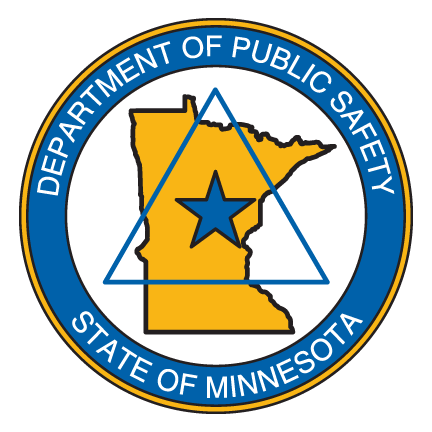
Alcohol and Gambling Enforcement
Bureau of Criminal Apprehension
Driver and Vehicle Services
Emergency Communication Networks
Homeland Security and Emergency Management
Minnesota State Patrol
Office of Communications
Office of Justice Programs
Office of Pipeline Safety
Office of Traffic Safety
State Fire Marshal
|
NEWS RELEASE
CONTACT:
Minnesota Requests FEMA Preliminary Damage Assessments
Initial Damage Estimates to Public Property/Infrastructure Exceed $32 Million
Page Content ST. PAUL — Following severe weather and flooding around Minnesota this spring, state, local and federal officials will begin Preliminary Damages Assessments (PDAs) in 50 counties and four tribal nations next week.
The Minnesota Department of Public Safety Homeland Security and Emergency Management (HSEM) division will join the Federal Emergency Management Agency (FEMA) in conducting PDAs around the state.
The PDA process begins May 7 and will likely take several weeks. It will document eligible damages for Governor Tim Walz to request a major disaster declaration for Public Assistance under the Stafford Act.
HSEM submitted the request for PDAs following severe weather that began on March 12 and ended April 29, when the last river fell below major flood stage. Snowmelt flooding, rain-induced flooding, and a snowstorm with ice and high winds all contributed to initial damage estimates from counties and tribal nations exceeding $32 million dollars. That figure is four times more than Minnesota’s public assistance statewide indicator of $7.9 million.
Included in this estimate are damages to public property and infrastructure (bridges, roads, parks, utilities) along with public safety protective measures taken during that timeframe. It does not include damages to private property, such as homes and businesses.
The following map details the four tribal nations and 50 counties listed in the PDA request. Additional counties may be added at a later date after floodwaters recede and initial damage estimates are submitted.
PROCESS:
The preliminary damage assessment is the first step in determining if Gov. Walz will be able to make a request for a presidential declaration of disaster:
- Local officials conduct an initial impact assessment.
Local officials to identify facilities impacted, damage, impacts to the communities and their demographics.
- HSEM requests FEMA to conduct a preliminary damage assessment.
Teams from the affected county, HSEM and FEMA conduct the assessment. They view the damage and collect the cost estimates from county officials. The teams review local emergency response records and compile figures for all affected counties. If the damage exceeds the federally determined damage threshold of $7.9 million statewide, the process continues.
- HSEM prepares the governor’s request for a disaster declaration.
This letter details the event and cites National Weather Service data. It must document factors that determine severity, magnitude and impact. It also documents what local officials did to respond to the emergency.
Local input regarding impact to the community is gathered and incorporated in the letter. This includes the amount and type of damage, impact on infrastructure, impact on essential services, concentration of damage, level of insurance coverage, assistance available from other sources, and if there is an imminent threat to public health and safety.
- Governor submits the letter to the president through FEMA.
FEMA reviews and sends the letter, with its recommendation to the president. The president is the only one with authority to grant a Presidential Disaster Declaration. If assistance programs are approved, HSEM officials work in partnership with FEMA to assist tribal nations and counties in their application for funds.
LINKS:
EDITOR’S NOTE:
HSEM and FEMA have finalized the schedule for the first week of PDAs. PDA schedules for subsequent weeks will be released at a later date.
Media wishing to attend the PDAs should contact Amber Schindeldecker in advance at 651-201-7576.
Tuesday, May 7:
Big Stone County, Jackson County, Lincoln County, Murray County, Nobles County, Ramsey County and Traverse County
Wednesday, May 8:
Brown County, Lac Qui Parle County, Pipestone County, Rock County, Stevens County and Swift County
Thursday, May 9:
Cottonwood County, Grant County, Lyon County, Martin County, Upper Sioux Community, Wilkin County and Yellow Medicine County
Friday, May 10:
Chippewa County, McLeod County, Redwood County, Renville County and Sibley County

###
About the Minnesota Department Public Safety
The Minnesota Department of Public Safety (DPS) comprises 11 divisions where 2,100 employees operate programs in the areas of law enforcement, crime victim assistance, traffic safety, alcohol and gambling, emergency communications, fire safety, pipeline safety, driver licensing, vehicle registration and emergency management. DPS activity is anchored by three core principles: education, enforcement and prevention.
About Homeland Security and Emergency Management
Homeland Security and Emergency Management helps Minnesotans prevent, prepare for, respond to and recover from emergencies and disasters.
445 Minnesota Street, Suite 100 | Saint Paul, Minnesota 55101-5155 | dps.mn.gov
|

